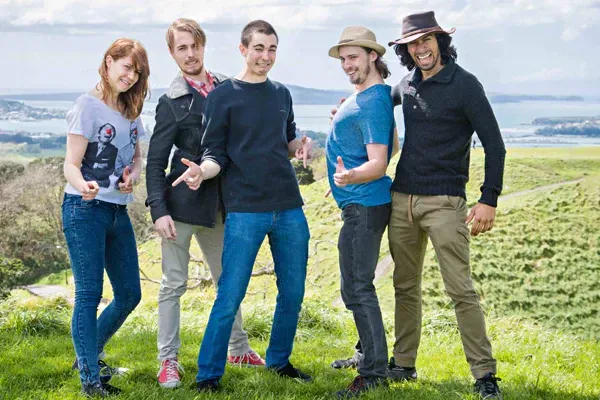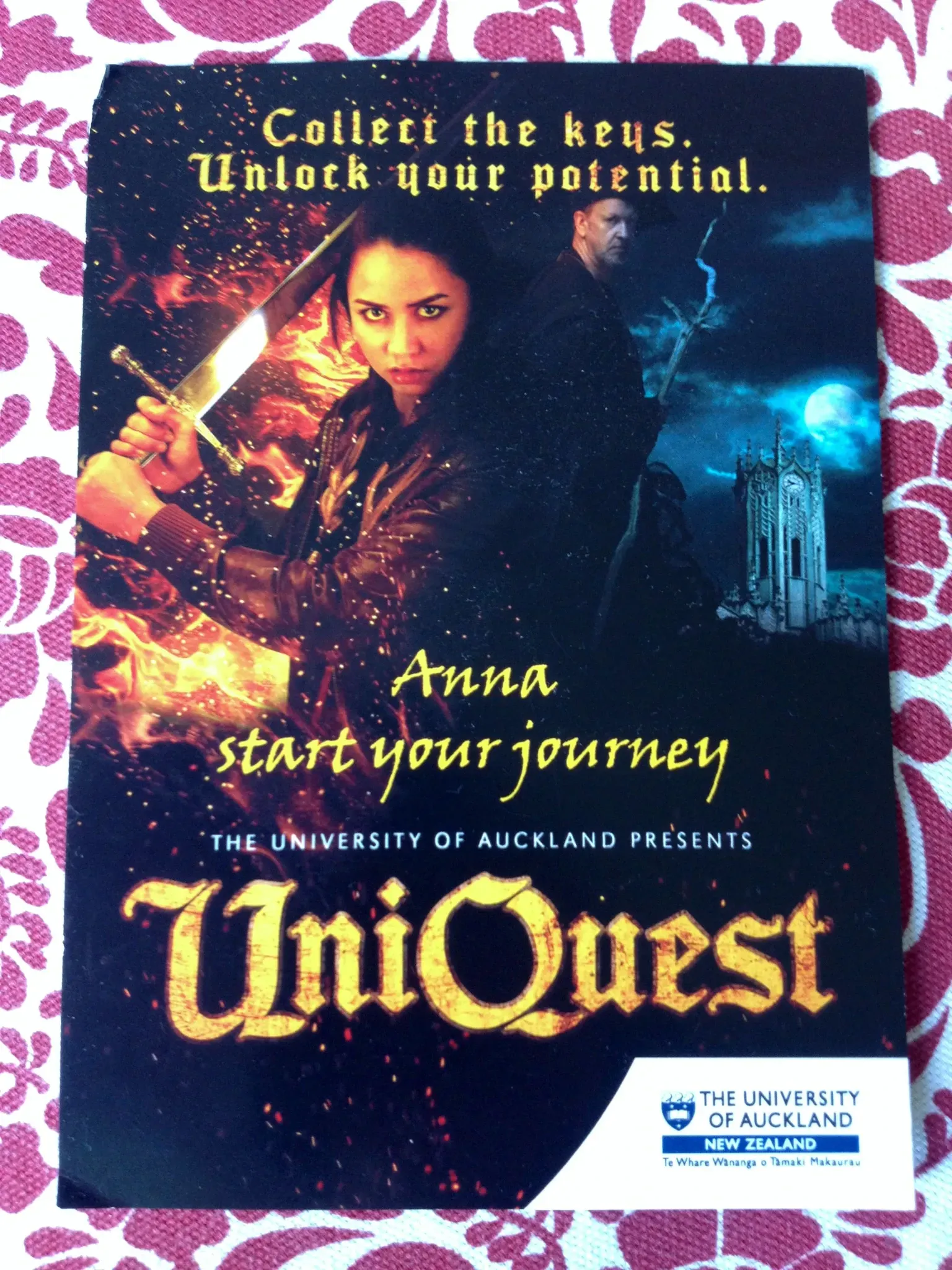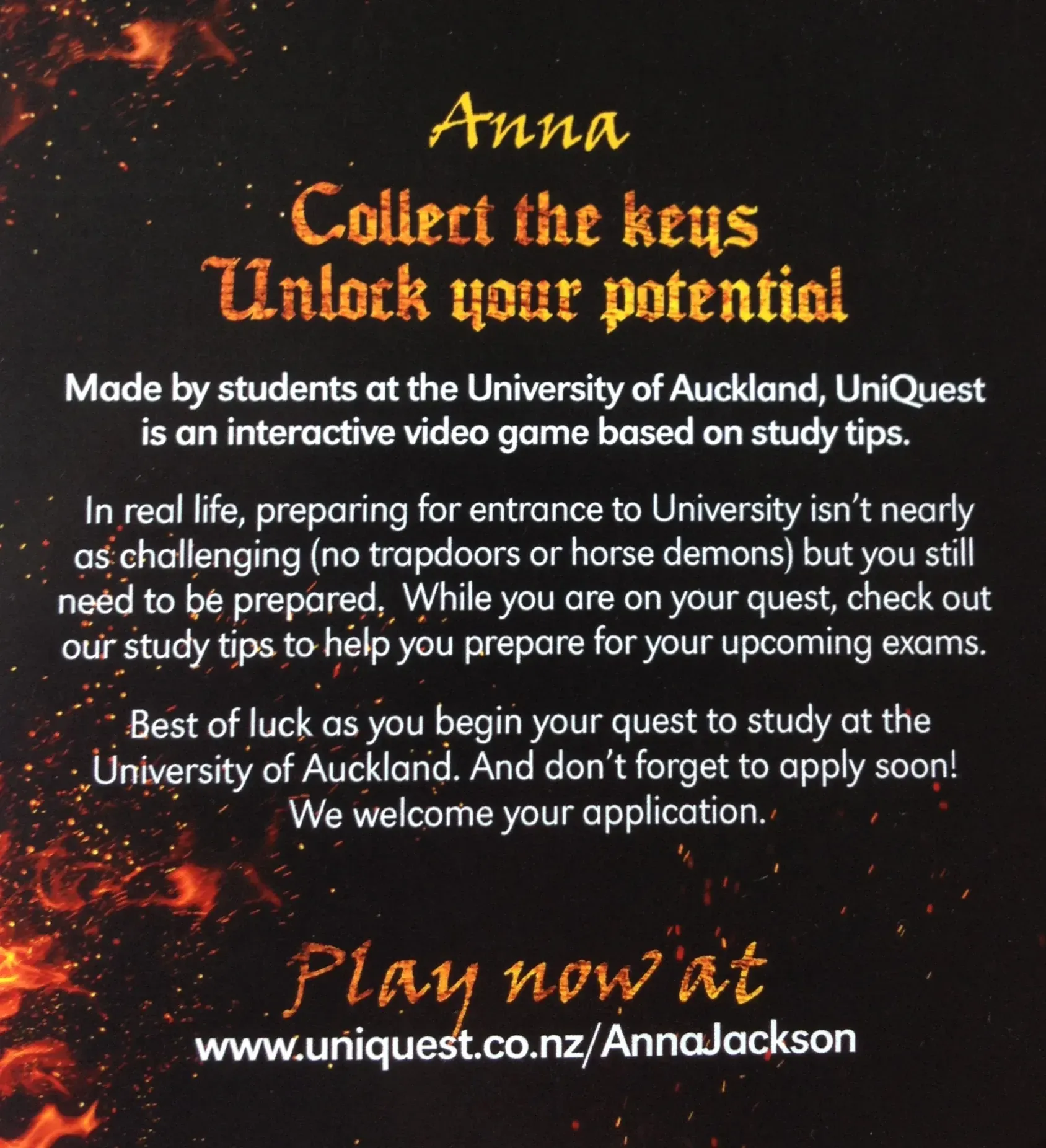UniQuest - start your journey
Written by

Anna Jackson meets Chillbox Creative, the group of students and creators of Auckland University's interactive video game UniQuest.
* * *
In my time as an undergrad student I trudged through an assortment of part time jobs ranging from the mundane to the ridiculous. The greatest achievement of that period of my working life was probably learning to make a decent cup of coffee; not a bad skill to have, but not particularly inspiring.
So I was pretty impressed when I met Naomi Bradshaw, the Advertising and Promotions Manager at The University of Auckland and she told me about a group of students she’d been working with who’d created their own production company, Chillbox Creative. Then I actually saw what Chillbox Creative had been making and I was in awe.
In the process of writing up this post I discovered that Chillbox also made the video for the Blurred Lines parody by Auckland University's Law Revue Girls that went viral worldwide. Hmm students today...
I met with Naomi and Gabe Lunte from Chillbox Creative Team to find out more about their latest project, UniQuest: an interactive video game based on study tips aimed at high school students preparing for entrance to University.
What is UniQuest?
UniQuest is an interactive video game where the player can have a pick a path experience like you might have done as a child with a book to be able to complete a number of challenges in order to gain access to the University. It's a game based on study tips principles and its part of a larger campaign to get secondary school students prepared for entry into university for their final year exams.
Naomi, how did you start working with Chillbox Creative?
I've worked with Chillbox for a while based on a recommendation from another department in the University. When I moved into a new role at the University we worked together on video promoting studying at Auckland showing the Auckland lifestyle. Then from there went on to develop a series of micro docos about the history of the University.
Feedback about the micro docos has been very positive. We've had thousands of views and the comments on YouTube have been particularly positive. There's also been a good response outside of the university community. Urbis magazine recently put an article on their website, which said that the videos are an informative and charming watch.
As I've been working more and more with Chillbox I've been more impressed with their skill set. They’ve done everything from animation to composing original music. Their filming and editing's great and so I was encouraged to try something new like an interactive video because I knew that they'd either be able to do it or else they'd be able to pick up the skills to do it quite quickly.
Gabe: Naomi really let us take a swing in the creative left field on this one.
Naomi: That was an important part of this campaign because I'm in my 30s now so not quite as connected to the people that we're trying to bring into university. I wanted to encourage our students and use the video as an opportunity to show the talent of our current students and their creativity rather than just dictating something to be done and I think as a University we should be supporting upcoming, emerging talent.
How does creating an interactive video differ from making something more linear?
Gabe: I think the first problem we ran into was that we wanted there to be a story. It's hard to put a story into something where you're essentially forfeiting control to whoever's playing. You are exercising authorial control when you're telling a story in video form but you also want to empower the viewer. So the trick is to construct that narrative through options. If you give them too many options it is just a game, you're relinquishing a bit of that narrative power and then it just becomes a mess. So it's about balance; knowing when to use interactivity and when not, and exercising some restraint. There's a game aspect in that you can win and you can lose. We intended for a lot of people to want to lose just to see what happens really.
There were a whole lot of spreadsheets and flowcharts as we tried to figure out how it would all link up. In the end it was about getting the story across and also having the information in there and reinforcing some of the values which were the point of the video to begin with, i.e. what skills do you need to go to University?
Why do you think viewers will want to engage with UniQuest?
Gabe: I think people are really smart. I think people know when they're being advertised to and I think they appreciate it when advertisers make an effort. If the advertiser can offer something, if they can offer an experience you're going to consume that marketing almost with pleasure, you're going to enjoy it. And I think that's really important; you have to have something to offer, and I think our main goal was that we wanted to provide something that was entertaining first. Creating something that was going to be enjoyable outside of its context was really important to us, something that people would share because they had fun, not because of other reasons.
What are the benefits of working with interactive video?
Naomi: I think in marketing there's definitely a push to create content that's interactive and engaging. People are quite cynical about advertising at the moment and they're tuned out from it, so to have something that engages the audience is really powerful because you have the longer interaction with that customer and there are different ways to do it based on the audience. This worked well with our intended audience, which are 16, 17 year olds, but an interactive video for a different audience you would tackle in a different way. There's a lot of focus on gamification in education now, particularly in actual teaching and learning to help inspire students to learn and adopt new concepts, but we're just experimenting with it here in this situation from a marketing perspective.
Gabe: I think, just media in general, there is a push for immersion and you see it in television shows that are become a lot more popular, people are binge-watching series. Netflix is all over that. But the same is true you with the video industry; people like engaging with their media. And I think that's a huge possibility for marketing and entertainment value. In terms of the crossover between video content, the movie industry and the video game industry are both huge industries. Imagine what you could do if you combined them.
Do you plan to develop UniQuest further. Where would you like to see it go?
Naomi: I think it has a lifespan beyond this year and we'll definitely be using it next year in promoting to secondary schools when we're out on the road with our schools partnership office. The interactive video itself is part of a larger campaign so we're also using direct mail and what are called PURLs (personalised URLs), so when we send out the postcard to our database you'll have your name as part of the URL, which is quit provocative and will get people to actually look at the website and then from there they'll play the game and we can track the data and see the clicks and the interactions and get them to look at applying and look at study options and those sorts of things. So I think that the potential for next year is to build on that and also to take our learnings from this to develop some new material.
Play UniQuest at http://www.uniquest.co.nz/
Don’t assume this is ‘just a student project’. It really does look great and it’s fun to play.

